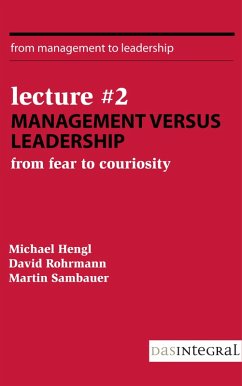What are the differences between leadership and management? How are they connected? What is the common goal? What methods do leaders and managers use? The essence of leadership is to create meaning and to formulate the appropriate goal while giving explanations for actions. The essence of management is to pave the way and to ensure the implementation of necessary steps to achieve the goal. It is possible to distinguish between the choices of having to or wishing to do something. If the chief punishes hunters who refuse to join in, the hunter runs towards the stag because he wants to run away from punishment. In fact, he is running away from, rather than towards, something. This is what we call a negative vector of motivation. Avoiding hunger is also a negative vector of motivation. In the temporal dimension, both incentives tend to be short-lived. If, on the contrary, the hunter bursts into a run because he wants to unite with the animal's soul, he is following a positive vector of motivation towards union. In all primeval societies, the shaman, not the chief, instilled this way of thinking in the hunter. The motivation of uniting spiritually in death with the totem is imbued with the idea of divine eternity and happiness. It transcends existence and imparts a higher purpose or meaning to life than pure self-preservation.
Dieser Download kann aus rechtlichen Gründen nur mit Rechnungsadresse in A, B, BG, CY, CZ, D, DK, EW, E, FIN, F, GR, H, IRL, I, LT, L, LR, M, NL, PL, P, R, S, SLO, SK ausgeliefert werden.









